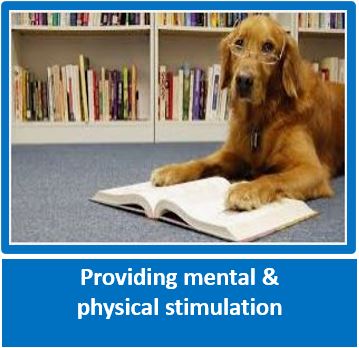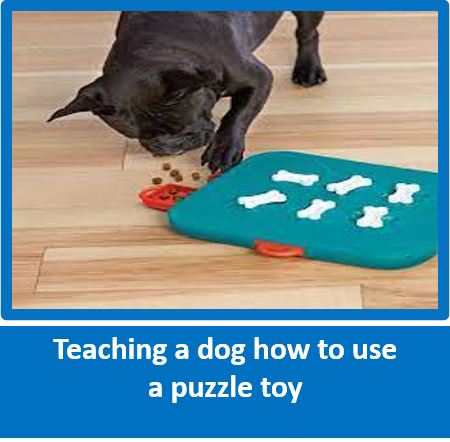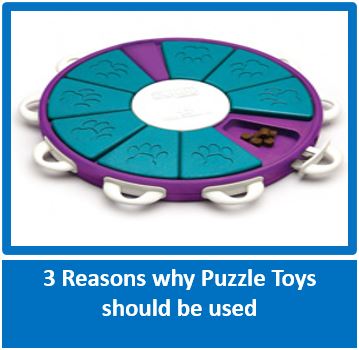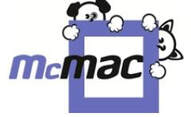
Do have a look on our website at all the top quality dog toys we have that can be stuffed and provide entertainment. We also have a great variety of puzzle toys for dogs that stimulate mentally and help to build confidence. Another idea is to put kibble into a Slow Feeders - there are multiple benefits to these, apart from slowing down the eating process. Do have a look through our website, we have just about everything you pet requires, whether dogs, cats or the 'little critters'. www.mcmac.co.za
Ditching the Food Bowl Is All Well And Good - But NOT Completely!
Scotty Valadao - Friends of the Dog - Canine Behaviourist
Scotty Valadao - Friends of the Dog - Canine Behaviourist
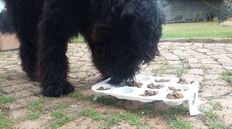
Ditching the food bowl and feeding by hand has become very popular, however, there are owners that are taking this to extremes, even with pups and adolescent dogs - the food bowl should never be completely ditched, especially when you are bringing a puppy and adolescent dogs, where manners are often forgotten.
Why, may you ask?
We need to bear in mind that dogs are natural resource guarders, especially pups, and young dogs and adolescents who had limited access to food. When you are working with a young pup or adolescent dog, it is absolutely crucial that you teach them that having humans (including children) around their food bowls, and having their food bowls handled while they are eating - to be touched while they are eating, is not something to become either stressed or aggressive over, rather it is a situation that should be a rewarding experience – the food bowl exercises should be practised regularly throughout the dogs life, and especially when they are pups and adolescents and additionally, if you adopt a dog from a shelter, it is always good to bring in food bowl exercises – just first determine there is no food guarding already (if there is get professional assistance), and go slower.
Some Food Bowl Exercises
Method One - As soon as possible and when the pup is settled, start the food bowl exercises. These are so simple to achieve and will go a long way to preventing resource guarding of the food bowl as well as aggression at food bowls. This is only done by the owner initially.
Method Two As soon as the pup is totally happy with above, sit next to the pup and as you praise and toss in treats, very gently touch the pup by the neck, praising all the time. Gradually, and slowly touch all over the body.
Method Three – This time you will walk towards the pup as it is eating, saying something along the lines of ‘sweetie coming’ in a happy tone of voice. Standing or kneeling, toss in some treats and repeat the exercises above, mixing them up.
After all the above are in place, then one by one, all members of the adult family do the same thing. After this is achieved, if any children, the process is repeated – with FULL adult supervision. Children should also be taught that they should never approach a dog that is eating, unless under adult supervision and exercises above being taught.
Ditching the Food Bowl
As soon as your dog is happily accepting people approaching and touching the food bowl, there is no reason why you should not bring in the Ditching the Food Bowl exercises, but rather do with one portion of the dogs daily allowance, or a few times a week, than ditching the food bowl completely – keep on practising the food bowl exercises on a regular basis.
When it comes to the dogs food, we are dealing with an incredibly valuable resource, so do use their food to your advantage. Just bear in mind that some dogs are real gluttons, and their food is of paramount importance, and using their daily allowance throughout the day, rather than feeding all in one go, can lead to frustration for the dog. If you do have a dog like this, then give part of the food in the bowl, and use the rest of it for training.
What does ditching the food bowl achieve?
While our dogs are with us, often 24 hours a day, it is an ideal time for training – training should not just occur for short periods of time, we should take advantage to build the bond with our dogs whether we are doing formal training or not. Dogs love to have a job, it stimulates them mentally and physically, increases your bond, and also places you higher in the combined human/canine social structure, and this makes for a dog that tends to trust and respect their owner.
Some ideas you can try
Why, may you ask?
We need to bear in mind that dogs are natural resource guarders, especially pups, and young dogs and adolescents who had limited access to food. When you are working with a young pup or adolescent dog, it is absolutely crucial that you teach them that having humans (including children) around their food bowls, and having their food bowls handled while they are eating - to be touched while they are eating, is not something to become either stressed or aggressive over, rather it is a situation that should be a rewarding experience – the food bowl exercises should be practised regularly throughout the dogs life, and especially when they are pups and adolescents and additionally, if you adopt a dog from a shelter, it is always good to bring in food bowl exercises – just first determine there is no food guarding already (if there is get professional assistance), and go slower.
Some Food Bowl Exercises
Method One - As soon as possible and when the pup is settled, start the food bowl exercises. These are so simple to achieve and will go a long way to preventing resource guarding of the food bowl as well as aggression at food bowls. This is only done by the owner initially.
- Holding the bowl just off the floor, place a little of the pup’s food inside, and have a few treats that are suitable for pups in your other hand.
- Offer the food in the bowl to the pup while holding the bowl, and every so often pop in a treat – this will make the pups impression of having people around its food is a very rewarding experience - it is being rewarded by praise and a tasty treat. Keep on praising as you do this.
- Play around with this – slowly – by lifting up the bowl a bit, placing it on the floor. On occasion, just toss in another piece of kibble as it is on the floor. What is important here, is not to go too fast – ensure that the pup is happy at each and every stage.
- Mix it up, but do not take the bowl away! Sometimes hold the bowl a little off the floor, other times toss in treats – always praising for the good behaviour.
Method Two As soon as the pup is totally happy with above, sit next to the pup and as you praise and toss in treats, very gently touch the pup by the neck, praising all the time. Gradually, and slowly touch all over the body.
Method Three – This time you will walk towards the pup as it is eating, saying something along the lines of ‘sweetie coming’ in a happy tone of voice. Standing or kneeling, toss in some treats and repeat the exercises above, mixing them up.
After all the above are in place, then one by one, all members of the adult family do the same thing. After this is achieved, if any children, the process is repeated – with FULL adult supervision. Children should also be taught that they should never approach a dog that is eating, unless under adult supervision and exercises above being taught.
Ditching the Food Bowl
As soon as your dog is happily accepting people approaching and touching the food bowl, there is no reason why you should not bring in the Ditching the Food Bowl exercises, but rather do with one portion of the dogs daily allowance, or a few times a week, than ditching the food bowl completely – keep on practising the food bowl exercises on a regular basis.
When it comes to the dogs food, we are dealing with an incredibly valuable resource, so do use their food to your advantage. Just bear in mind that some dogs are real gluttons, and their food is of paramount importance, and using their daily allowance throughout the day, rather than feeding all in one go, can lead to frustration for the dog. If you do have a dog like this, then give part of the food in the bowl, and use the rest of it for training.
What does ditching the food bowl achieve?
While our dogs are with us, often 24 hours a day, it is an ideal time for training – training should not just occur for short periods of time, we should take advantage to build the bond with our dogs whether we are doing formal training or not. Dogs love to have a job, it stimulates them mentally and physically, increases your bond, and also places you higher in the combined human/canine social structure, and this makes for a dog that tends to trust and respect their owner.
Some ideas you can try
- Take some of the mornings ration of food and instead of putting in the bowl, scatter it around the garden, or even the house. Dogs scent naturally and this is a great way to get the dog scenting, keeps it busy and entertained, and as your dog becomes proficient in it, you can scatter further and make it more challenging for the dog to find it.
Why not make use of a Snuffle Mat, and start to put some of the daily ration on this – dogs absolutely love snuffle mats and sniffing around in them to find food. You can use empty toilet rolls and instead of throwing them away, place some tissue in one end, stuff with kibble, and then a tissue on the other end – such fun for the dog, and it gets to tear up the toilet roll as well.
Some people suggest putting some kibble inside empty plastic bottles; however, we are not in favour of this, and chewing on plastic can be dangerous.
This is ideal to do in the morning, as most of our lives are very busy when it comes to feeding time for you dog, with taking kids to school, getting ready for work etc. - Make use of any toy that can be stuffed and put in a portion of the food and really stuff it down. This will keep your dog mentally stimulated and provide entertainment.
One of our clients that had 3 dogs (no resource guarding) and filled a child’s shell shaped paddling pool with balls and then mixed in kibble – the dogs had an absolute ball trying to get to the kibble, and it kept them happy and entertained for ages. - We often seem to chastise our dog when they do something wrong, but what about when they do something we like that we may take for granted? How often do you praise and treat your dog for lying quietly for example? While you are at home, and your dog is lying quietly, why not praise him ‘good settle’ and toss him a treat or two? When he is sitting with you, praise and treat him for being quiet – when you are grooming him, praise and treat. Look for as many situations as possible where you can treat for good behaviour.
Think of the dog that comes when you call and you just expect this to happen – have some kibble in your pocket on a permanent basis, as he comes to you ‘good come’ praise and treat. You are completely reinforcing the recall and further building your bone. You can take the recall even further and have the whole family standing in a circle or semi-circle, each with some kibble with them. The dog is called from person to person, and each time he comes, he is requested to Sit – here you are really reinforcing polite behaviour and strengthening the recall. This game is great fun for dogs, and as your dog becomes proficient in it, the can encourage him to run faster and faster from person.
Think about the dog that barks when somebody goes past – the second the barking stops, praise and treat ‘good silence’. As this becomes a habit, you will find that the dog may bark once or twice, and then look at you as if to say ‘ok, where is my treat!
- Keep some of the daily kibble around the home in different places and from time to time, call your dog and ask for a Sit, Down, Watch, or even just call him to come to you – again praise and treat. You can keep some kibble close to doors, and call your dog to the door, ask for a Sit and Wait, and then praise and reward. You can do the same, getting both in and out of the car.
- Don’t just use the daily kibble in the home, what about bringing it in when on walks? Your dog may be in front of you – call him to you, praise and treat, and then tell him ‘free’ to go about his walk again. You can bring in a Sit or even a Down at the same time. You are on your walk and your dog comes across a delicious scent – as he finishes, praise ‘good smellies’ and offer him a treat – once again you are rewarding good behaviour.
Another one that dog love when on walks, is to toss a few pieces of kibble in the grass and let him find them – just another way of using scattering of food and you are providing more mental stimulation.
Another method to use on walks is to bring in the Watch exercise and to get him to Watch you on a regular basis. This is an amazing tool to have to distract your dog from anything he may perceive as being fearful, plus it is a Calming Body Signal that dogs use, and will serve to calm them and also build the bond between you. Start in the home environment and then start to include on walks – there is a link above to show you how to do this simple exercise.


